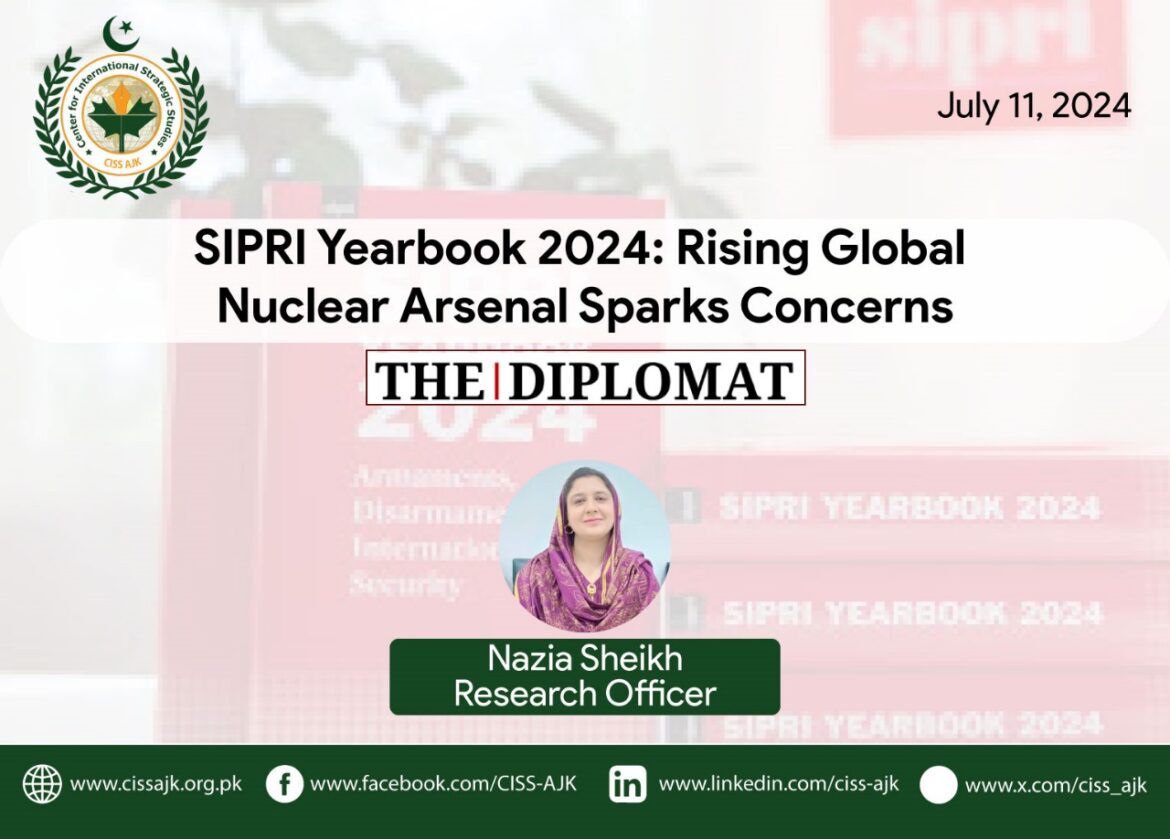It is estimated that there are 12,121 nuclear weapons in the world, 9,585 of which are in military stocks and ready for deployment.
SIPRI’s analysis highlights the consequences of these developments for regional and international security, providing a glimpse into the changing dynamics and strategic concerns surrounding nuclear deterrence. The report provides a comprehensive review of the modernization and growth of nuclear arsenals, which underlines the growing significance of these developments in the context of geopolitical stability and international security.
Satellite images of plutonium production plants and uranium enrichment facilities are the main basis for these evaluations. Although these facilities’ operational history offers important information, the precise methods and measurements employed by SIPRI and the International Panel on Fissile Materials (IPFM) are still mostly unknown, raising doubt on the accuracy of these estimations. Political considerations affect Western assessments of South Asia’s nuclear capabilities. The background of India’s larger nuclear program and geopolitical stance supports this perspective. India would naturally never fall behind Pakistan — a nation with a far younger nuclear program — given that it tested its first nuclear weapon in 1974 and has a complete nuclear triad.
India has a strong nuclear capacity supported by air, land, and sea-based nuclear delivery capabilities and one of the world’s largest indigenous uranium stocks. Moreover, the 2008 Nuclear Suppliers Group (NSG) waiver permitted India to import significant quantities of nuclear fuel, protecting its domestic uranium for possible use in weapons development.
Pakistan’s military doctrine does not follow the no-first-use (NFU) policy; instead, it reserves the right to launch preventive nuclear attacks, especially in light of perceived disparities with India’s conventional and nuclear armed forces. The emphasis on non-strategic nuclear weapons as a counter to India’s “Cold Start” strategy, which calls for fast military mobilization, highlights this position, according to the SIPRI analysis. Pakistan is predicted to have spent $1 billion on its nuclear development in 2023, or $1,924 per minute, according to a separate analysis by the International Campaign to Abolish Nuclear Weapons (ICAN).
As of January 2024, SIPRI estimates that India’s nuclear arsenal had 172 warheads, a small increase from the year before. India’s growing nuclear triad consists of these weapons in addition to aircraft, land-based missiles, and nuclear-powered ballistic missile submarines (SSBNs). India has historically kept its nuclear weapons and launchers apart during times of peace, but recent developments indicate a change in policy toward the mating of some warheads with launchers during times of peace. India is generally getting its nuclear forces more ready and may be moving toward a counterforce posture, which tries to attack an enemy’s nuclear arsenal before they have a chance to strike. Per the ICAN research, India’s nuclear program is expected to cost $2.7 billion in 2023.
China and Pakistan are the main targets of India’s nuclear deterrent. With the development of longer-range missiles, China has also come into focus for India, which originally targeted Pakistan with its shorter-range nuclear weapons. While the 1999-established NFU policy is still in effect in India, changes were made in 2003 to include the possibility of using nuclear force in response to non-nuclear attacks.
The U.S., Russia, the U.K., France, China, India, Pakistan, North Korea, and Israel are the world’s nine nuclear-armed nations that are updating their arsenals and putting new nuclear-capable weapon systems into service, according to the report.
It is estimated that there are 12,121 nuclear weapons in the world, 9,585 of which are in military stocks and ready for deployment. Approximately 2,100 warheads on ballistic missiles are kept in a high operational alert condition, mostly by the U.S. and Russia; China just joined this group.
The research highlights the ongoing nuclear states’ modernization efforts, which involve both the development of new technologies like multiple independently targetable reentry vehicles and enhancements to their current arsenals. North Korea, Pakistan, and India are vying for this capability, which could result in a spike in the number of deployable warheads and the possibility of more extensive devastation in situations of conflict.
The report additionally highlights India’s emphasis on developing longer-range weapons, particularly ones that can strike targets anywhere in China and Pakistan, suggesting an increase in its deterrent power. The strategic stability of South Asia and the precarious balance of power in the area are at risk due to the modernization of the Indian military. India’s desire to strengthen its military might is further supported by its national interest in emerging as a regional hegemon. The South Asian security conundrum is being exacerbated by India’s military modernization program, as Pakistan seeks to counterbalance India’s growing military might by strengthening its own armed forces. This might set off a furious arms race to preserve South Asia’s fragile power equilibrium.



